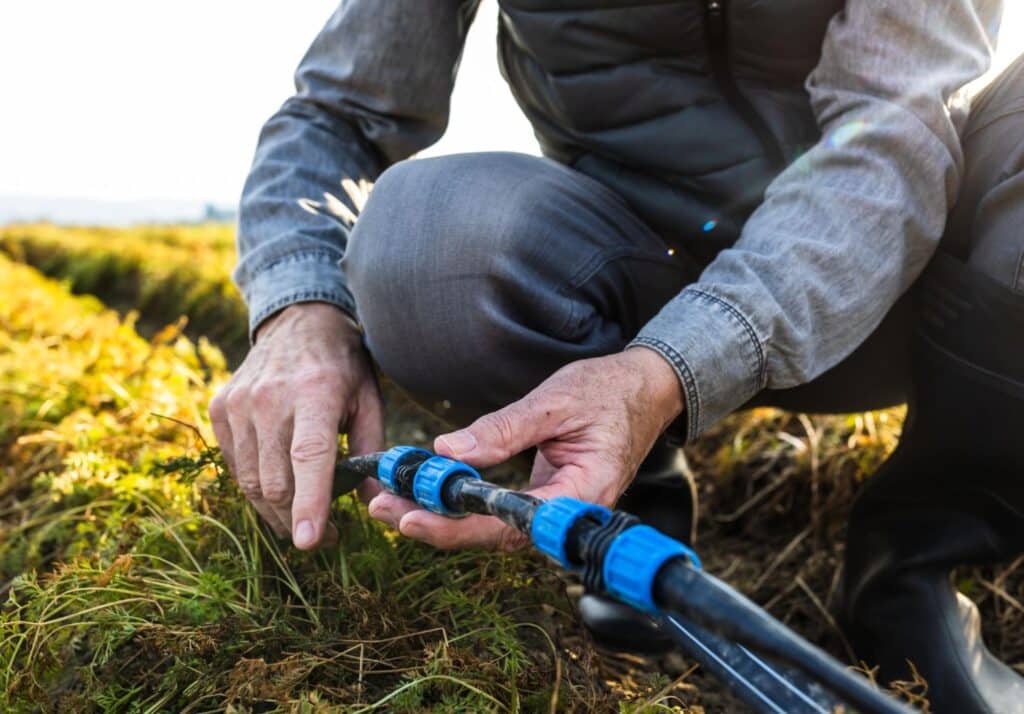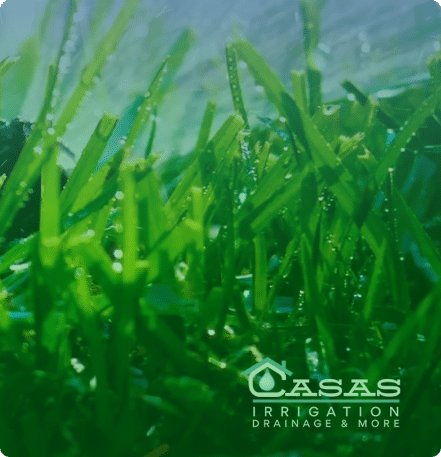Signs Your Irrigation System Needs Help – Seasonal Checklist
Maintaining a green, healthy lawn in Frisco, TX isn’t only about mowing or fertilizing. The real work happens underground and at the surface through your irrigation system. Sprinklers and drip lines distribute water consistently, but like any system, they need routine care. Small issues that go unchecked—such as leaks, clogged heads, or misaligned nozzles—waste water and damage landscapes.

This guide explains the seasonal signs your irrigation system needs help and gives you a practical checklist so you know what to watch for in spring, summer, fall, and winter.
Why Seasonal Irrigation Maintenance Matters
Texas experiences sharp seasonal changes. Summers bring average highs of 95°F in July [Source: Weather Atlas], while winters in Collin County can drop below freezing. These shifts put stress on irrigation systems. A small crack in a pipe during winter may turn into a major leak in spring. Overwatering during hot months can also increase utility bills.
Studies from the Environmental Protection Agency (EPA) show that as much as 50% of outdoor water use is wasted due to inefficient irrigation [Source: EPA WaterSense]. Seasonal maintenance protects your landscape and saves money.
Spring Checklist: Restarting After Winter
Spring is the season to wake up your sprinkler system after months of cold. Irrigation systems are most vulnerable after freezing temperatures.
1. Test the System for Leaks
Leaking pipes or vablves create soggy patches in your lawn. Watch for standing water around valve boxes, catch basins, or near the foundation.
2. Inspect Sprinkler Heads
Broken or tilted heads are common after winter. Snow, ice, or lawn equipment may knock them out of place. Replace cracked heads and straighten tilted ones to restore coverage.
3. Flush the Lines
Sediment often builds up while the system sits dormant. Flushing clears dirt and prevents clogged nozzles later in the season.
4. Reprogram Controllers
Check your timer. Many controllers reset after power outages. For spring, set shorter cycles to prevent overwatering in mild temperatures.
Summer Checklist: Beat the Heat
Summer in North Texas puts heavy demand on irrigation. With more hours of sunlight and hotter days, your system must work efficiently to keep up.
1. Monitor Water Pressure
Low pressure creates weak spray patterns. High pressure produces misting, which wastes water through evaporation. Use a pressure gauge to keep it between 30–50 PSI for most sprinkler systems.
2. Watch for Overspray
Water spraying onto sidewalks, driveways, or streets means heads are misaligned. Overspray wastes gallons of water daily and can erode soil near concrete.
3. Inspect Drip Irrigation
If you use drip lines for flower beds, check for kinks, punctures, or clogged emitters. Plants often wilt in summer not because of lack of water but due to blocked drip lines.
4. Look for Brown Spots
Brown patches surrounded by green grass suggest uneven coverage. Run your system manually and watch how each zone performs.
Fall Checklist: Preparing for Dormancy
As temperatures cool, grass and plants need less water. Fall is the time to repair damage from summer and prepare for winter.
1. Adjust the Watering Schedule
Reduce watering frequency. Grass in Frisco typically needs 1 inch of water per week in fall, compared to higher needs in summer.
2. Check Drainage Solutions
Heavy fall rains highlight poor drainage. Watch for pooling near patios or flower beds. Solutions like surface drains, French drains, or channel drains prevent erosion and protect foundations.
3. Inspect Backflow Preventers
Backflow devices protect drinking water from contamination. Test for cracks or leaks before freezing weather arrives.
4. Replace Worn Seals and Filters
Rubber gaskets and filters wear down during summer heat. Replacing them in fall prevents surprise failures next season.
Winter Checklist: Protect Against Freezing
Irrigation systems in Collin County face risk of freeze damage during winter nights. A frozen pipe expands and bursts, leaving costly repairs in spring.
1. Winterize the System
Drain and insulate exposed pipes. Professional sprinkler winterization uses compressed air to clear water from lines and heads.
2. Shut Off the Controller
Switch the timer to “off” or “rain mode.” This prevents accidental watering cycles during freezing weather.
3. Protect Backflow Devices
Wrap backflow preventers and above-ground valves with insulation covers. Hardware stores sell foam protectors that fit most models.
Year-Round Signs Your Irrigation System Needs Help
No matter the season, these are the top warning signs your system needs repair:
- High water bills without changes in usage.
- Soggy spots or erosion around drains, patios, or flower beds.
- Uneven growth with dry areas and overwatered patches.
- Frequent clogs in nozzles or drip emitters.
- Malfunctioning controllers that skip zones or run at the wrong times.
Why Professional Irrigation Services Save Time
DIY inspections are useful, but many problems require specialized tools. Professionals use pressure gauges, electronic leak locators, and soil moisture sensors to diagnose issues accurately.
A study by the Texas A&M AgriLife Extension shows that efficient irrigation practices can reduce water use by up to 30% [Source: Texas A&M AgriLife]. Hiring experts not only saves water but also protects property value by keeping landscapes healthy.
Frequently Asked Questions (FAQs)
Q: How often should I service my irrigation system?
A: Twice a year—spring and fall—are the most important times for inspections and adjustments.
Q: What causes low water pressure in sprinklers?
A: Common causes include leaks, partially closed valves, or too many heads on one zone.
Q: Can I skip winterization in Frisco, TX?
A: Skipping winterization risks frozen pipes. A single burst line can cost hundreds in repairs.
Q: How long should I run sprinklers in summer?
A: Most North Texas lawns need about 1–1.5 inches of water weekly. Break watering into 2–3 shorter cycles for absorption.
Q: What are signs of clogged nozzles?
A: Uneven spray, reduced distance, or water pooling near the head often point to a clog.
Call Casas Irrigation Drainage and More for Expert Help
Your irrigation system protects your lawn, landscape, and foundation. Don’t let leaks, clogged heads, or poor drainage ruin your outdoor space. At Casas Irrigation Drainage and More, we deliver expert solutions in sprinkler repair, sprinkler installation, surface drains, French drains, channel drains, drip irrigation, sprinkler winterization, landscape lighting (not Christmas lights), and custom landscape design across Frisco and Collin County, TX.
Call 469-200-5111 today to schedule your seasonal inspection or repair and keep your outdoor spaces efficient, healthy, and beautiful.



